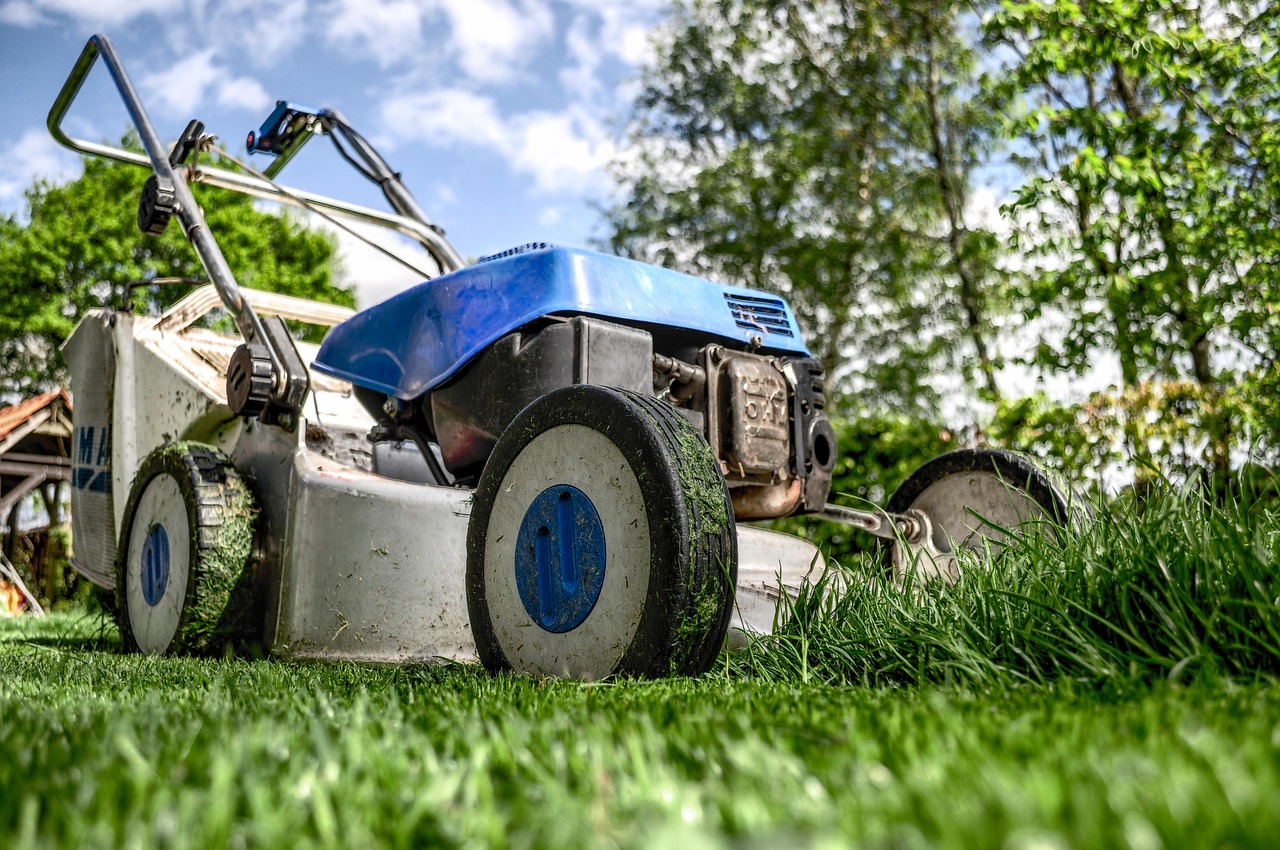Lawn Care Guide: How to Maintain Healthy, Green Grass All Year Round
Lawn Care Guide: A lush, green lawn doesn’t just happen by chance. Creating and maintaining that perfect carpet of grass requires understanding, effort, and consistent care throughout the seasons. Whether you’re a new homeowner facing your first yard responsibilities or looking to upgrade your lawn care game, this comprehensive guide will walk you through everything you need to know about caring for your grass.
Understanding Your Grass Type
Before diving into maintenance techniques, it’s crucial to identify what type of grass you’re working with. Lawn grasses fall into two main categories:
Cool-Season Grasses
These thrive in areas with cold winters and moderate summers, growing most actively in spring and fall.
- Kentucky Bluegrass: Forms a dense, self-repairing turf with excellent cold tolerance
- Tall Fescue: Drought-resistant with deep roots; handles moderate shade
- Perennial Ryegrass: Quick to establish with good wear tolerance
- Fine Fescue: Excellent shade tolerance with minimal maintenance requirements
Warm-Season Grasses
These perform best in southern regions with hot summers and mild winters, growing most actively in late spring through early fall.
- Bermuda Grass: Heat and drought tolerant with aggressive growth
- Zoysia Grass: Dense turf that handles traffic well; moderate shade tolerance
- St. Augustine: Excellent shade tolerance with broad leaf blades
- Centipede Grass: Low maintenance with moderate shade tolerance
- Bahia Grass: Excellent drought resistance; handles poor soils
Knowing your grass type determines nearly every aspect of care, from optimal mowing height to fertilization timing and water requirements.
Lawn Care GuideSeasonal Lawn Care Calendar
Spring Lawn Care (Early to Late Spring)
Spring is when your lawn awakens and begins active growth. Focus on:
Early Spring Tasks:
- Rake thoroughly to remove thatch and winter debris
- Conduct soil test to determine pH and nutrient needs
- Apply pre-emergent herbicide to prevent summer weeds
- Repair bare spots once soil temperatures reach 55°F
Late Spring Tasks:
- Begin regular mowing once grass starts actively growing
- Apply spring fertilizer (typically high in nitrogen) for cool-season grasses
- Spot-treat broadleaf weeds as they appear
- Calibrate irrigation system and adjust for spring needs
Summer Lawn Care
Summer presents challenges like heat stress, drought, and pest pressures:
Early Summer Tasks:
- Apply slow-release fertilizer (for warm-season grasses)
- Raise mowing height to reduce heat stress
- Monitor for insect damage, particularly grubs, chinch bugs, or armyworms
- Establish deep, infrequent watering patterns (1-1.5 inches per week)
Late Summer Tasks:
- Continue vigilant watering during hot periods
- Spot-treat weeds as needed
- Monitor for fungal diseases during humid periods
- Prepare for fall renovation (for cool-season lawns)
Fall Lawn Care
Fall is the critical recovery season for most lawns:
Early Fall Tasks:
- Aerate compacted soil
- Overseed cool-season lawns
- Apply fall fertilizer with higher phosphorus content
- Continue regular mowing
Late Fall Tasks:
- Apply final winterizing fertilizer
- Continue mowing until growth stops
- Rake leaves promptly to prevent suffocating grass
- Winterize irrigation system
Winter Lawn Care
Even during dormancy, your lawn needs attention:
- Minimize traffic on frozen grass
- Apply winter weed control as needed
- Clear debris that could smother grass
- Plan next year’s lawn care strategy
Essential Lawn Care Practices
Proper Mowing Techniques
Mowing is the most frequent lawn care task and often the most misunderstood:
Mowing Height:
- Cool-season grasses: 2.5-4 inches
- Warm-season grasses: 1-3 inches (varies by specific type)
- Increase height during summer heat stress
- Never remove more than 1/3 of the blade length at once
Mowing Frequency:
- Mow based on growth rate, not calendar
- During peak growing seasons, this might mean twice weekly
- Reduce frequency during dormant or slow-growth periods
Equipment Maintenance:
- Sharpen blades at least twice per season
- Clean equipment after use
- Maintain proper engine operation
Watering Wisdom
Proper irrigation is critical for lawn health:
Watering Guidelines:
- Deep, infrequent watering encourages deep root growth
- Apply approximately 1-1.5 inches of water weekly (including rainfall)
- Water in early morning (4-10 AM) to minimize evaporation and disease
- Look for signs of wilt (footprints remain visible, grass takes on bluish tint) before watering
Irrigation Systems:
- Calibrate sprinklers to ensure even coverage
- Consider smart controllers that adjust based on weather conditions
- Monitor performance regularly for broken heads or leaks
Fertilization Fundamentals
Feeding your lawn properly builds resilience and vigor:
Fertilizer Components:
- Nitrogen (N): Promotes leaf growth and green color
- Phosphorus (P): Supports root development
- Potassium (K): Enhances disease resistance and stress tolerance
Application Timing:
- Cool-season grasses: Main applications in fall and spring
- Warm-season grasses: Main applications in late spring through summer
- Always follow soil test recommendations for precise amounts
Application Methods:
- Use broadcast or drop spreaders for even coverage
- Apply to dry grass, then water lightly
- Follow package directions for exact rates to avoid burning
Weed Management Strategies
A multi-pronged approach works best for weed control:
Pre-emergent Control:
- Apply in early spring before soil temperatures reach 55°F
- Apply in fall (September) to control winter annual weeds
- Requires proper timing to be effective
Post-emergent Control:
- Spot-treat existing weeds rather than blanket applications
- Apply when weeds are actively growing
- Use selective herbicides that target specific weed types
Cultural Practices for Weed Prevention:
- Maintain proper mowing height to shade weed seedlings
- Avoid overwatering which favors certain weeds
- Overseed to create dense turf that crowds out weeds
Aeration and Dethatching
These practices alleviate soil compaction and remove excess organic matter:
Core Aeration:
- Best performed during growth season
- Cool-season grasses: Early fall or spring
- Warm-season grasses: Late spring through summer
- Particularly important for high-traffic areas
Dethatching:
- Remove thatch when layer exceeds 1/2 inch thick
- Perform during active growth periods
- Can be combined with overseeding for lawn renovation
Troubleshooting Common Lawn Problems
Brown Patches
Potential causes include:
- Fungal disease: Circular patterns, often with darkened edges
- Insect damage: Irregular patterns, sometimes with turf that pulls up easily
- Dog urine: Concentrated spots with greener rings around edges
- Dull mower blades: Grass tips appear frayed and turn brown
Thinning Grass
Look for:
- Excessive shade: Grass appears stretched and sparse
- Compacted soil: Surface feels hard, water pools rather than absorbing
- Improper fertilization: Overall weak growth or uneven coverage
- Poor mowing practices: Scalped areas that fail to recover
Weedy Lawn
Contributing factors include:
- Mowing too short: Exposes soil to sunlight for weed germination
- Improper watering: Shallow, frequent watering favors weed seeds
- Poor soil fertility: Weak grass cannot compete with weeds
- Lack of pre-emergent control: Allows annual weed cycles to continue
Eco-Friendly Lawn Care Approaches
As environmental awareness grows, many homeowners are adopting more sustainable lawn practices:
Organic Lawn Care
- Use compost tea and natural fertilizers like alfalfa meal or fish emulsion
- Embrace beneficial nematodes and microbial products for pest control
- Accept some weed presence rather than pursuing perfect uniformity
- Overseed with clover or microclover for natural nitrogen fixation
Reduced-Input Lawns
- Select low-maintenance, drought-tolerant grass varieties
- Incorporate drought-resistant ground covers in difficult areas
- Reduce lawn size by adding planting beds and hardscaping
- Practice grasscycling (leaving clippings) to return nutrients to soil
Native Grass Alternatives
Consider replacing traditional lawn in some areas with:
- Buffalo grass (warm regions)
- Fine fescues (cool regions)
- Native meadow mixes appropriate to your region
- No-mow seed blends that require minimal maintenance
Conclusion
A beautiful lawn represents the culmination of consistent care practices applied throughout the seasons. While achieving that magazine-worthy turf requires effort, understanding the fundamentals of grass growth and maintenance needs makes the process more manageable and rewarding.
Remember that regional differences, local climate conditions, and your specific lawn goals all impact the perfect care regimen for your grass. Consider consulting with local extension services for region-specific advice tailored to your area’s conditions and challenges.
By following the seasonal calendar and implementing the core practices outlined in this guide, you’ll be well on your way to creating a lawn that not only looks impressive but also contributes positively to your local environment by preventing erosion, cooling your property, and providing a healthy outdoor space for family activities.


